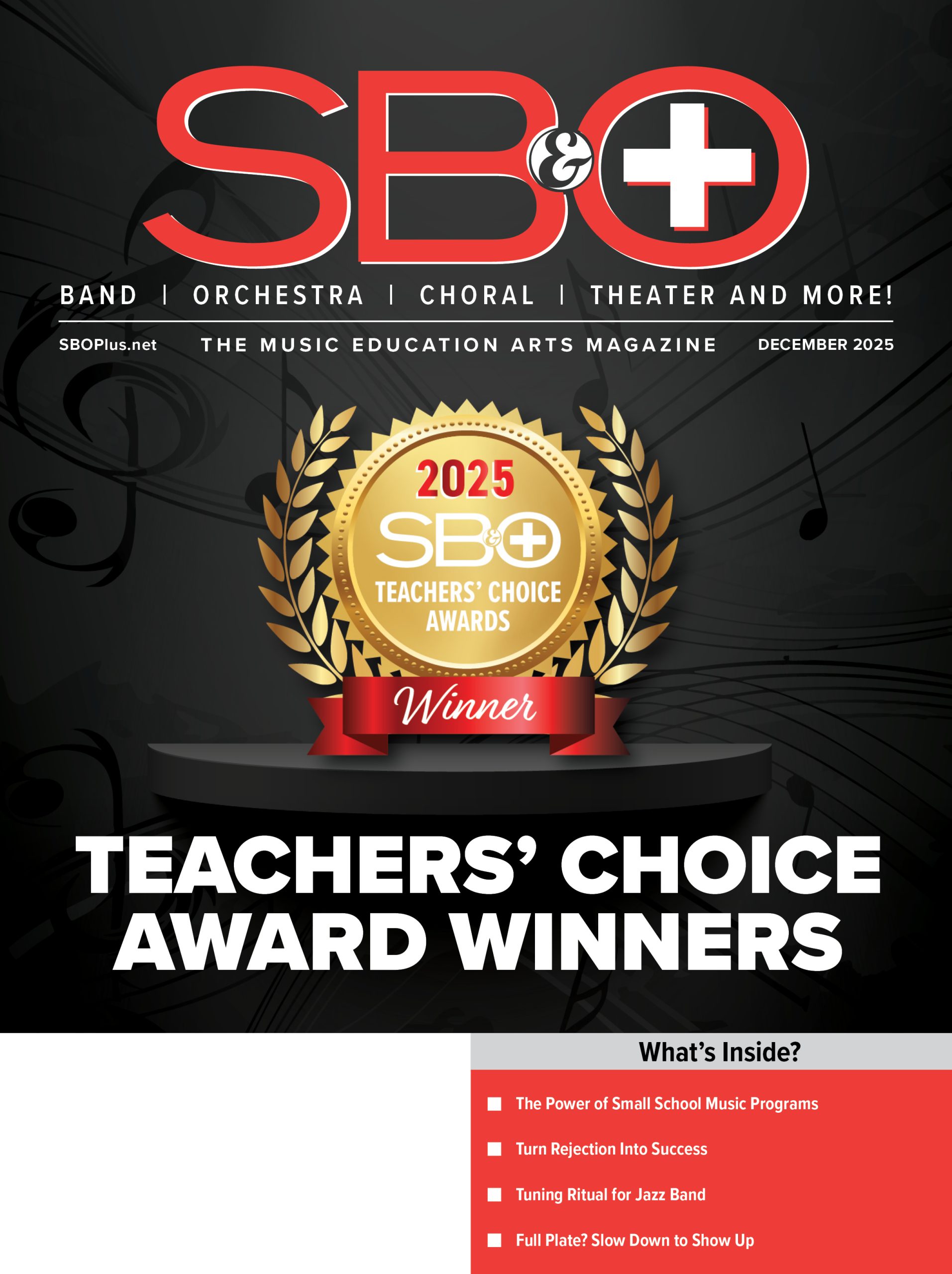
In 2006, Google purchased internet upstart YouTube, NASA launched its New Horizons probe aimed at Pluto, and in pop music Daniel Powter’s “Bad Day” was on top of the charts. Also in 2006, the first titles in Hal Leonard’s “Flex-Band” series rolled off the press, including “Mission: Impossible Theme” and “Pirates of the Caribbean.” Long before the pandemic of 2020 when the term “flex” became paramount for directors and students alike, this was an important and useful format, and will certainly continue in relevance even after the pandemic finally passes.
My colleague Paul Lavender (VP of Instrumental Music, Hal Leonard) and I had heard from directors throughout the country of the need for music appropriate for smaller programs with good players, just not the right combination of instruments to successfully play music scored for full concert band. Even pieces designed for young bands often rely on the textures and colors of the full band. Lacking any of the main instrument groups, the music sounds incomplete. A number of “flexible” publications did exist at that time, but these were mostly easy arrangements and in collections rather than single titles. Paul and I felt it was time to re-evaluate the possibilities and revamp the format for contemporary programs.
The first critical decision determined the number of parts included in the scoring format. We had seen “adaptable” publications written for as few as two parts and as many as eight. Too few parts makes it difficult to provide enough textural and scoring variety to create something with musical depth and interest. We wanted to avoid a format that was simply block scoring with everyone playing all the time. Conversely, we felt that too many parts would present complicated challenges for small ensembles. Ultimately, we settled on five parts, plus percussion. Similar to writing for a brass quintet, five parts allows the writer to pass the melody around to various instruments and give players periodic rests.
One of the most important features of our Flex-Band format is that each of the five parts has options for woodwinds, brass, and even strings. This allows for maximum flexibility when it comes to assigning parts, as well as being able to use the same publication with a variety of ensemble types and instrument combinations. It’s possible to play these pieces entirely with woodwinds or brass, or even string orchestra, or with mixed ensembles and chamber groups. The percussion scoring follows a traditional concert band format; although in cases where fewer players are available, it’s usually possible to eliminate some of the parts, or use drum set to cover the important figures.
Another feature of the series is a full transposed score, rather than a condensed score in concert pitch. Admittedly this takes a little getting used to, since the instruments are grouped by “part” rather than traditional score order. We felt it was important, particularly for younger levels, to show exactly what each student is playing, and that this was a beneficial feature. Finally, we wanted to provide a variety of styles and genres for programs that needed lighter and seasonal pieces in addition to serious works for contest or festival. Over 140 titles are currently available.
Initially we limited the grade level to 2-3, anticipating this would be the level most needed. In 2020, we added a new easier level designed for second-year players (grade 1.5). The easier level includes four parts rather than five.
There are several ways to utilize these pieces in the classroom starting with coming as close as you can to a traditional full band setting. Assign Parts 1 and 2 to upper woodwinds and trumpets as usual. Parts 4 and 5 naturally can be assigned to lower instruments, with Part 3 providing the most options for part assignment. Whenever possible, assign woodwinds and brass on each part. This allows for flexibility if you choose to have only woodwinds or brass play a particular passage for variety. These suggestions are often indicated in the score, but you can easily customize the scoring yourself within the limitations of what you have available.
Another option is to use these within the instrument families, for example, woodwind or brass ensembles. Of course, in order to cover all five parts, a mix of higher and lower instruments is needed. While the format allows for a wide variety of combinations, there are cases where it simply won’t work – tuba ensemble or flute choir, for example. If there are parts you can’t find instruments for, consider using a keyboard to fill in.
The ability to create chamber ensembles is another important aspect of the series. Even if you have a large program with plenty of students, consider additional performing opportunities for small ensembles with one or two players per part. A traditional concert program can be enhanced by featuring small groups performing between larger works.
While trying to function during a pandemic has certainly caused chaos and confusion in the way we normally teach, perhaps one good thing to come from it is the need to be flexible in our approach and create new opportunities for our students. These added skills and materials can be valuable even after we return to the normal classroom.
Internationally recognized composer Michael Sweeney is a 1977 graduate of Indiana University, a former band director in Indiana and Ohio, and is known widely for his popular works for younger ensembles. Joining Hal Leonard LLC in 1982 he has over 500 publications to his credit and is currently director of band publications. He resides in the Milwaukee area where he enjoys fishing and playing traditional Irish music.


















